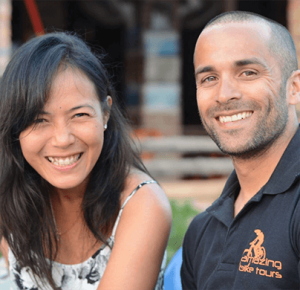Philippines – Getting to know Manila
From the moment you arrive in Manila – the Philippines’ sole soaring metropolis – there’s no doubt that this is the country’s dynamic hub, its beating heart and soul. From the modern skyscrapers and malls to the quaint environs of the Colonial-era walled city, the teeming streets of ‘the Pearl of the Orient’ reflect its status as the Filipino capital of culture, commerce, food, art and sheer excitement.
Philippines Manila Travel Guide
The megacity of Metro Manila is split into no less than 17 constituent cities, but right at their heart lies Intramuros, the original 16th century walled city built by the Spanish founders of the trading port. Today the beautiful Colonial churches are corralled together with theatres, art galleries and a nature park – but the most atmospheric remnant of this timewarp quarter has to be the hell-hole dungeons of Fort Santiago, a certain deterrent to any lingering thoughts of revolution!
Manila is one of the foremost centres for the performing arts in Asia, a city positively packed with theatre and concert venues both Oriental and Occidental. There’s absolutely everything here, from traditional Filipino song and dance to rock, Broadway musicals and even improv.
Binondo’s Chinatown enclave is the oldest in the world. Take a traditional jeepney ride through its thronging street markets and past its spectacular Art Deco architecture. There’s a simple rule of thumb for which street snacks, traditional Chinese teahouses or cafes to pick: whenever you find the wafting aromas irresistible, just give in to the stuffed spicy dumplings, the seafood noodles and succulent pork empanadas.
What to do in Manila
Manila is home to a seemingly endless number of museums and art galleries, proudly showcasing the nation’s artistic history and thriving contemporary scene. The city is an unexpected hotbed for the arts, and the quality and quantity of private galleries is simply staggering.
Visit Quiapo district to experience the atmosphere of traditional Manila, its streets and markets overflowing with novelties and local handicrafts, fortune tellers and herbalists.
At the other end of the East-meets-West shopping spectrum, you can shop, shop and then shop some more at SM Megamall, SM North Edsa or SM Mall of Asia – three of the largest ten shopping malls in the world, and all found within the megacity of Metro Manila.
Feast of the Black Nazarene
Held annually on 9th January, the Feast of the Black Nazarene sees up to 12 million visitors hit downtown Quiapo, as the local church’s life size, dark-skinned image of Jesus is paraded through the streets. The figure originated in 16th century Mexico, and depicts Christ on the road to crucifixion.
A traditional Filipino dish, balut is a boiled, fertilized duck egg with a half-formed chick inside. It’s considered a potent aphrodisiac…
Getting off the trail in Manila
Manila is located on Luzon, the biggest of all the Philippine archipelago’s 7000 islands. To the north lies Ifugao province, home to the spectacular cascading rice terraces recognised by UNESCO as a World Heritage Site. Spend time exploring these picturesque wonders on foot, and make the most of the hospitality of friendly local farmers selling coffee and snacks.
Ultimate thrill seekers need look no further than Mount Pinatubo, 60 miles north-east of Manila, an active volcano whose deep turquoise crater lake has to be seen to be believed. Its last eruption in 1991 was the second largest anywhere on earth during the 20th century, ejecting 10 billion metric tons of magma and 20 million tons of sulphur dioxide. Taal Volcano, 30 miles south, is equally picturesque, with another impressive claim to fame: the crater lake on Volcano Island is the world’s largest lake on an island in a lake on an island.
Speak to someone who's been there
Philippines ⟩ Siargao
Philippines ⟩ Southern Luzon
Philippines ⟩ Cordillera Region
Philippines ⟩ Bohol & Panglao
Philippines ⟩ Palawan & El Nido
Philippines ⟩ Borocay
Philippines ⟩ Manila




